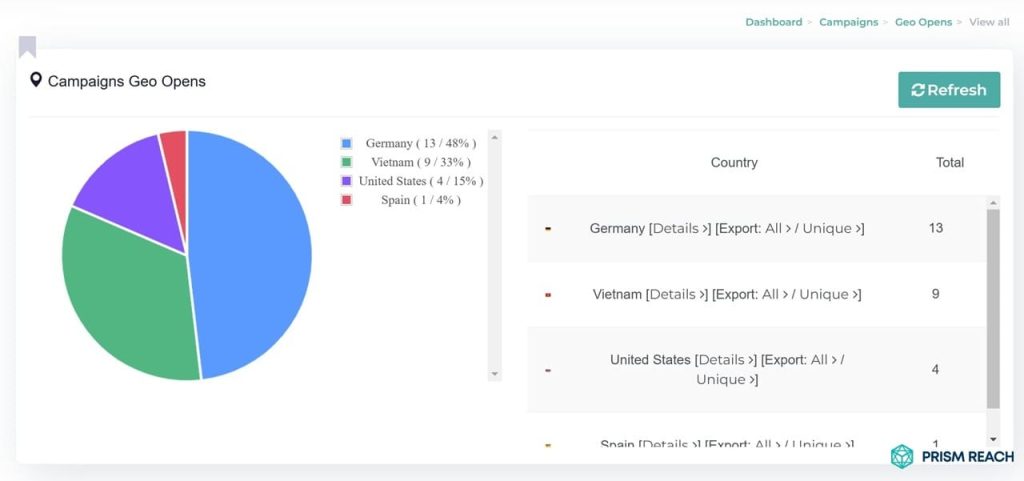In the ever-evolving landscape of digital marketing, email remains a cornerstone of customer engagement and conversion. As businesses strive to optimize their email marketing efforts, understanding how to effectively use metrics to inform strategy is more crucial than ever. Metrics provide the insights needed to refine campaigns, tailor content, and ultimately achieve higher returns on investment.
With the advent of advanced analytics and AI-powered tools, the ability to analyze and act upon email marketing metrics has transformed. Businesses can now leverage data-driven strategies to cut through the noise of crowded inboxes, delivering messages that resonate with their audience. This article explores innovative strategies that focus on using metrics to inform your email marketing strategy, ensuring your campaigns are not only effective but also continuously improving.
Key Facts
- Email marketing metrics provide actionable insights that can increase open rates by up to 30% and click-through rates by 25% when used strategically.
- According to a recent study by Litmus, 77% of marketers reported that email marketing ROI has increased over the past 12 months, with some seeing returns as high as 4200%.
- Implementing metric-informed strategies can lead to a 760% increase in email revenue from segmented campaigns compared to non-segmented campaigns.

Mastering the Use of Metrics in Email Marketing Strategy
Accurately measuring and interpreting email marketing metrics is essential for crafting strategies that drive engagement and conversions. By focusing on key performance indicators (KPIs) and integrating innovative approaches, marketers can fine-tune their campaigns for optimal results. Below are five lesser-known but highly effective strategies that focus on enhancing the use of metrics in your email marketing strategy.
1. Engagement Scoring
Implement an engagement scoring system that assigns points based on subscriber interactions, such as opens, clicks, and conversions. This system allows you to prioritize high-value subscribers and tailor your messaging accordingly.
- Benefits:
- Provides a nuanced understanding of subscriber engagement.
- Enables targeted marketing efforts based on engagement levels.
- Helps identify high-value subscribers for personalized campaigns.
- Implementation Tips:
- Define clear criteria for scoring different types of engagement.
- Regularly update scores based on ongoing interactions.
- Use scores to create dynamic segments for more effective targeting.
2. Active on Site Metrics
Track how recipients behave on your website after clicking through from an email. Metrics like time spent on the site and pages viewed provide insight into product interest and buying intent, informing future email content.
- Benefits:
- Offers a comprehensive view of the customer journey.
- Identifies the effectiveness of email content in driving website engagement.
- Helps optimize website experience based on email-driven traffic.
- Implementation Tips:
- Integrate email marketing tools with website analytics platforms.
- Set up tracking parameters for links within your emails.
- Analyze post-click behavior to refine email content and targeting.
3. Utilize Heatmaps
Use heatmaps to visualize where users click within your emails. This insight reveals which elements attract attention and can guide design improvements for better engagement.
- Benefits:
- Provides visual data on subscriber interaction with email content.
- Helps optimize email layout and design based on click patterns.
- Identifies high-performing and underperforming elements within emails.
- Implementation Tips:
- Use email analytics tools that offer heatmap functionality.
- Analyze heatmaps to understand subscriber behavior.
- Refine email design based on heatmap insights to enhance engagement.
4. Monitor Email Sharing Rates
Measure how often your emails are shared or forwarded. A high sharing rate indicates valuable content, providing insights into what resonates with your audience and can help inform future campaigns.
- Benefits:
- Reveals the shareability and appeal of your email content.
- Helps expand your reach through organic sharing.
- Identifies content types that encourage recipients to share.
- Implementation Tips:
- Include social sharing buttons in your emails.
- Track the number of shares and forwards using analytics tools.
- Encourage sharing by offering incentives or highlighting share-worthy content.
5. Conduct Cohort Analysis
Analyze specific groups of subscribers over time to see how their engagement changes based on different campaigns or strategies. This helps identify trends and the effectiveness of various approaches tailored to different audience segments.
- Benefits:
- Identifies long-term engagement trends among different subscriber groups.
- Helps assess the impact of specific campaigns on distinct cohorts.
- Facilitates targeted adjustments to improve engagement over time.
- Implementation Tips:
- Define cohorts based on signup date, behavior, or other relevant criteria.
- Analyze engagement metrics for each cohort over set periods.
- Use insights from cohort analysis to tailor future campaigns for improved engagement.

Hidden Gem Strategies
In addition to the foundational strategies, incorporating these five hidden gem strategies can further enhance your use of metrics in email marketing, making your campaigns more organized, effective, and aligned with your overall marketing goals:
1. Feedback Loop Integration
Regularly solicit feedback from subscribers through embedded surveys in your emails. This not only shows you value their opinions but provides direct insights into what content they prefer or find useful.
- Benefits:
- Provides valuable insights for improving products or services.
- Builds trust by demonstrating that you value customer opinions.
- Enhances the overall customer experience through continuous improvement.
- Implementation Tips:
- Include short, easy-to-complete surveys in your emails.
- Ask specific questions to gather actionable feedback.
- Use the feedback to make meaningful changes and communicate those improvements to your subscribers.
2. Benchmark Against Industry Standards
Regularly compare your metrics against industry benchmarks to identify areas for improvement. Understanding where you stand relative to competitors can help refine strategies for better performance.
- Benefits:
- Provides context for your email performance metrics.
- Identifies areas where you outperform or underperform industry standards.
- Helps set realistic and competitive performance goals.
- Implementation Tips:
- Research industry benchmarks relevant to your sector.
- Regularly review and compare your metrics against these benchmarks.
- Identify areas for improvement and adjust your strategies accordingly.
3. Segment Based on Engagement Levels
Create segments based on engagement levels (active, inactive, etc.) and tailor your messaging accordingly. For example, re-engagement campaigns targeted at inactive users can help revive interest.
- Benefits:
- Enhances targeting by addressing specific engagement levels.
- Increases engagement by providing relevant content to each segment.
- Improves retention by re-engaging inactive subscribers.
- Implementation Tips:
- Analyze engagement data to categorize subscribers into different segments.
- Develop tailored campaigns for each engagement segment.
- Monitor the performance of each segment and refine your strategies based on results.
4. Utilize Predictive Analytics
Leverage predictive analytics tools that analyze past campaign performance to forecast future engagement trends and optimize sending times, subject lines, and content based on historical data.
- Benefits:
- Provides data-driven predictions to enhance campaign effectiveness.
- Helps identify optimal times and content for sending emails.
- Increases engagement by anticipating subscriber preferences and behaviors.
- Implementation Tips:
- Integrate AI-powered analytics tools with your email marketing platform.
- Analyze historical data to train predictive models.
- Apply AI insights to refine and optimize your email campaigns continuously.
5. Track Post-Campaign Metrics
After each campaign, analyze not just immediate metrics like open rates but also long-term effects such as sales generated or new sign-ups attributed to the campaign. This holistic view helps assess overall effectiveness.
- Benefits:
- Provides a comprehensive view of campaign impact beyond immediate interactions.
- Helps link email campaigns to tangible business outcomes.
- Facilitates better ROI calculations by tracking long-term effects.
- Implementation Tips:
- Set up tracking mechanisms to attribute sales and sign-ups to specific campaigns.
- Analyze long-term engagement and retention metrics post-campaign.
- Use post-campaign insights to refine future strategies and improve overall effectiveness.

Innovative Solutions by Prism Reach
While implementing these strategies can significantly improve your use of metrics in email marketing, leveraging advanced technology can take your campaigns to the next level. This is where Prism Reach comes into play. Our AI-powered SaaS solution is designed to revolutionize your email marketing efforts by automating and optimizing many of these measurement and engagement-boosting strategies.
Key Benefits of Prism Reach:
Integration with Other Platforms: Seamlessly integrate Prism Reach with your CRM and other marketing tools, facilitating comprehensive tracking of metrics like “active on site” and customer lifetime value.
Enhanced Analytics and Reporting: Prism Reach offers advanced analytics features, including engagement scoring, predictive analytics, and comprehensive reporting tools that provide deeper insights into your email campaign performance.
AI-Powered Insights: Our AI-driven tools analyze subscriber behavior and predict future engagement trends, helping you optimize your email strategies with data-driven precision.
Integration with Other Platforms: Seamlessly integrate Prism Reach with your CRM and other marketing tools, facilitating comprehensive tracking of metrics like “active on site” and customer lifetime value.
Upgrade Your Email Marketing with AI Personalization!
1. Utilize Prism Reach’s AI-Powered Personalization
Prism Reach’s AI-driven personalization capabilities enable you to deliver highly relevant content based on subscriber behavior and preferences. By analyzing first-party data, Prism Reach ensures that each email is tailored to the individual, enhancing the user experience while maintaining privacy compliance.
2. Implement Adaptive Testing with Prism Reach
Prism Reach’s adaptive testing feature allows you to test multiple variations of your email content simultaneously. Unlike traditional A/B testing, adaptive testing automatically adjusts traffic distribution based on performance, identifying the best-performing content more efficiently. This ensures that your emails are always optimized for maximum engagement and conversion.
3. Leverage Prism Reach’s Data Security Features
With Prism Reach, data security is paramount. The platform includes advanced security measures such as encryption and regular security audits, ensuring that subscriber data is protected against breaches and unauthorized access. This commitment to data security builds trust with your audience and aligns with compliance requirements.

Conclusion
Using metrics to inform your email marketing strategy is a multifaceted endeavor that requires a combination of traditional metrics and innovative strategies. By implementing hidden gem strategies such as engagement scoring, tracking active on site metrics, utilizing heatmaps, monitoring email sharing rates, and conducting cohort analysis, marketers can gain a comprehensive understanding of their email campaign performance.
Additionally, integrating strategies like feedback loop integration, benchmarking against industry standards, segmenting based on engagement levels, leveraging predictive analytics, and tracking post-campaign metrics further enhances the accuracy and depth of your email marketing measurements. These approaches provide deeper insights that go beyond surface-level metrics, enabling more informed decision-making and strategy refinement.
Leveraging advanced tools like Prism Reach can significantly amplify these measurement strategies. With features such as enhanced analytics and reporting, AI-powered insights, and seamless integration with other platforms, Prism Reach empowers marketers to optimize their email campaigns with unparalleled precision and efficiency.
Ultimately, the key to successful email marketing lies not just in tracking the right metrics but in understanding and acting upon the insights they provide. By adopting a comprehensive and innovative approach to using metrics in email marketing, businesses can drive meaningful engagement, foster stronger customer relationships, and propel their online presence to new heights.